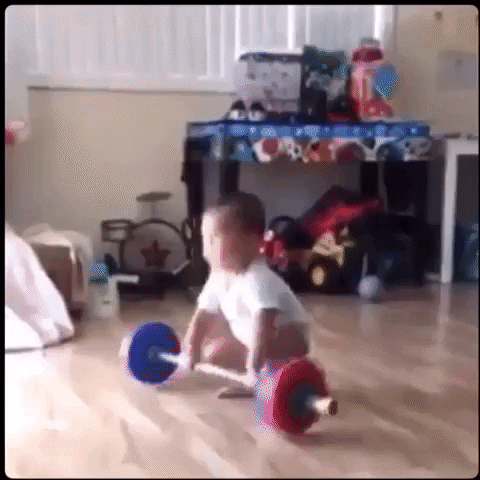Transforming Infant Health: Unveiling Revolutionary Baby Wearables
Discover the Future of Infant Care with Cutting-Edge Baby Wearables

In the rapidly evolving landscape of parenting, stay ahead with the latest breakthrough – wearables designed exclusively for your little ones. From monitoring vital signs to decoding sleep patterns, these devices are transforming the way parents nurture their babies. Dive into the realm of innovation and ensure a safer, healthier, and more connected journey into parenthood
We have seen great advancements in wearable technology for babies and toddlers over the years. These devices can offer valuable insights into a child's health and development, when used appropriately.
For monitoring vital signs, wearables like smart socks, wristbands, and shirts are now available with sensors to track heart rate, oxygen saturation, respiratory rate, and temperature. The latest models have no wires or adhesives that could irritate a baby's delicate skin. As long as the devices fit properly, they can collect these vitals around-the-clock without much fuss.
Sleep tracking has also benefited from wearables. Sock sensors, onesies, and bracelets can identify sleep/wake cycles by tracking subtle movements and heart rate changes. This helps parents understand their baby's slumber patterns, and identify needs like earlier bedtimes or more daytime naps. Just know normal sleep varies widely at different ages. So quality sleep insights are just as important as quantity.
When it comes to activity tracking, we now have tiny fitness trackers, ankle bands, and shoes with built-in pedometers to count steps and monitor general activity levels. They can motivate older infants learning to walk/run by showing them colorful progress toward daily “step goals”.
The key is not to overload a young child with too much tracking technology. Start with one or two devices that provide helpful insights without constant alarms or distractions.
Introduction
Baby monitoring technology has seen rapid innovation lately across both wearables and traditional monitors. Let me give you an overview.
Starting with wearables, we now have sensor-equipped smart socks, wristbands, and clothing that can track your baby's heart rate, oxygen levels, respiration rate, and temperature continuously without wires or adhesive on their skin. Sock sensors in particular can leverage pulse oximetry technology to get highly accurate reads. The data feeds to an app on the parent's smartphone for real-time tracking. Benefits include catching early warning signs and logging health data over time without disturbing baby's routines. Limitations currently include managing charged batteries, proper sensor fit, and avoiding information overload as a parent.
When it comes to traditional monitors, we have everything from basic audio and video baby monitors to more advanced models leveraging wifi connectivity, night vision, movement tracking, sleep analytics and more. For instance video monitors allow you to not only hear baby, but view them on a portable screen from anywhere inside or outside the home. Sleep monitors can detect and analyze sleep cycles. Movement monitors have sensors that detect lack of breathing motion and trigger alarms to prevent SIDS, for example.
A Guide to Essential Baby Monitoring Technologies
Baby wearables that track vitals, sleep, activity can provide helpful health insights that are typically hard to monitor otherwise. For example, continuous heart rate and oxygenation data could give early warning signs of infection or breathing issues. Sleep cycle tracking helps parents better understand and support baby’s changing sleep needs over time. I usually recommend wearables for:
- Newborns - helping establish healthy baseline vitals/sleep patterns early on
- Identifying issues - when parents notice potential health or developmental issues arising
As for traditional video, movement and audio monitors, these help remotely supervise baby’s activities for convenience and immediate awareness. For instance, I suggest basic audio monitors for all infants so parents can respond promptly to cries from another room. And video monitors work well for:
- Mobile infants - monitoring movement/play in baby proofed areas
- Multi-tasking - keeping an eye on napping babies while doing chores
The exception is using movement monitors specifically to reduce SIDS risks during unsupervised sleep when other means (like room sharing) aren’t feasible.
When considering which and if any baby monitoring devices are critical, I tend to recommend focusing on the technologies that offer vital health insights or protection that parents otherwise could not easily have, while being mindful of avoiding information overload.
If I had to choose the most critical from those mentioned, I would highlight:
- Smart socks/wearables that track vital signs - Having 24/7 data on things like heart rate, blood oxygen levels, and respiratory rate could detect early health issues parents might miss. Getting alerts for potential concerns allows for timely interventions.
- Movement/breathing monitors - These monitor breathing rates or alert if movement stops during sleep. They can save lives by quickly alerting parents to check on situations where SIDS may be an issue. However, many experts argue room sharing alone can reduce SIDS risks if parents follow back-sleeping guidelines.
- Basic audio monitors - While not flashy, audio baby monitors remain one of the most useful technologies. Hearing cries or distress promptly is extremely valuable for responding to needs and preventing escalation.

Decoding Key Questions
What is the wearable technology for baby monitoring?
Wearable technology refers to smart devices integrated into clothing or accessories that babies can wear to track various health data. They provide insights through sensors and connectivity without requiring restrictive wires or adhesive patches on delicate skin.
What are 3 examples of wearable technology?
Three prime examples include:
1. Smart socks - Sock sensors like those from Owlet leverage pulse oximetry to measure heart rate, oxygen levels, and sleep trends. The socks connect to a base station and app that tracks data and sends alerts if levels fall outside preset zones.
2. Wristbands - Devices like the Sproutling band worn on a baby's ankle or wrist use similar sensor technology to monitor heart rate, skin temperature, sleep patterns and more. Some also incorporate accelerometers to track movement. They connect insights to a smartphone app.
3. Smart onesies - Companies like Mimo and Nanit offer full-body infant onesies and pajamas embedded with a variety of sensors to monitor respiration, body position, activity levels and sleep metrics. The fabric sensors link up to apps and analytics.
Can wearable technology prevent SIDS?
When it comes to preventing SIDS specifically, no technology has conclusively demonstrated that capacity. However, newer smart socks and movement monitors aim to alert parents early to respiratory or heart rate irregularities that could signal distress. While not proven, they may provide warning to help parents intervene before an incident occurs. But adherence to safe sleep practices remains the best preventative measure parents can take.
The Crucial Role of Continuous Baby Vital Monitoring
Having uninterrupted data on things like heart rate, blood oxygen saturation, and respiratory rate can provide invaluable health insights. Especially for new parents getting to know their babies in the first fragile months, having 24/7 vital streams can help establish baselines and detect subtle changes early. For example, gradually declining oxygenation levels, increased heart rate variability, or anomalies in respiration could signal issues arising that parents may not notice based just on observation. Catching health or breathing issues early allows for timely interventions and treatment if needed.
Just as importantly, having continuous readings logged over time helps identify trends and patterns. Parents and doctors can analyze the data streams longitudinally to ensure healthy trajectories. We can spot whether further assessment may be prudent for things like possible heart conditions, chronic lung issues, risks for SIDS, and related health factors. For instance, respiration irregularities associated with SIDS often start subtly.
Additionally, having hard data from the sensors allows for more quantifiable diagnoses. Rather than relying on subjective descriptions of symptoms, physicians can make data-driven diagnoses and treatment decisions based on the metrics. The streamlined insights improve care.
Understanding Sudden Infant Death Syndrome (SIDS)
Sudden Infant Death Syndrome (SIDS) has long been a tragic phenomenon feared by parents. Let me provide an overview of its history, our evolving understanding, early signs, and current prevention recommendations:
SIDS, also known as "cot death", is the unexplained death of a seemingly healthy infant, typically younger than 1 year of age. The exact cause of SIDS is unknown, but it is often associated with sleep and is sometimes referred to as "crib death" . SIDS is most common between the ages of 2 and 4 months, with 90% of SIDS deaths occurring before the age of 6 months
Historical Background
For centuries, unexplained infant deaths have puzzled societies, and the evolution of our understanding and terminology surrounding this phenomenon is marked by significant milestones. It wasn't until 1969 that the Diagnostic and Statistical Manual officially defined Sudden Infant Death Syndrome (SIDS) as the sudden death of an infant under one year old that remains unexplained after thorough investigation.
The historical narrative shifts to the 1990s when Back to Sleep campaigns emerged, advising parents to place infants on their backs during sleep to mitigate suffocation risks. Subsequent research uncovered additional environmental triggers, including bed sharing, overheating, and soft bedding, contributing to asphyxiation and breathing issues during sleep. This discovery led to the formulation of infant sleep guidelines that significantly reduced SIDS rates.
Despite progress, SIDS continues to be a leading cause of infant mortality, claiming over 3000 lives annually in the United States, typically affecting infants aged 1-4 months. The elusive nature of the exact mechanisms behind SIDS persists, but research suggests links to respiratory control malfunctions. Subtle signs such as difficulty breathing, slower heart rates, or movement irregularities during sleep have been identified. The advent of promising sensor technology provides hope for early detection and further prevention.
The first internationally accepted definition of SIDS emerged in 1969, defining it as the sudden death of an infant or young child that is unexpected by history, and a thorough postmortem examination fails to demonstrate an adequate cause for death. A pivotal case control study, completed in Northern Ireland and published in 1971, compared 148 SIDS cases with age-matched controls. In the early 1990s, a sharp decrease in the incidence of SIDS deaths followed the implementation of public health campaigns and changes in infant care practices. However, during the 1970s, SIDS was perceived as neither predictable nor preventable, as reflected in the National SIDS Act of 1974, which funded statewide projects.
Early Signs
SIDS has no symptoms or warning signs. Babies who die of SIDS seem healthy before being put to bed, showing no signs of struggle, and are often found in the same position as when they were placed in the bed. Minor breathing or stomach problems might occur in the weeks before SIDS occurs.
Current Preventative Methods
While there is no sure way to prevent SIDS, several measures can help reduce the risk:
- Place the baby on their back to sleep.
- Avoid smoking or using nicotine during pregnancy, and do not allow smoking around the baby.
- Do not drink alcohol or use illegal drugs during pregnancy.
- Breastfeeding for at least six months to a year can lower the risk of SIDS.
- Regular prenatal care can reduce the risk of SIDS.
- Vaccinated babies are at lower risk for SIDS.
- Offer a pacifier at nap time or bedtime, which may reduce the risk of SIDS.
- Avoid products and devices that go against safe sleep guidance, especially those that claim to prevent SIDS and other sleep-related infant deaths.
Mapping the Impact: Global Insights into Sudden Infant Death Syndrome (SIDS)
When looking at the global incidence of SIDS (Sudden Infant Death Syndrome), it is clear that this tragic phenomenon impacts families worldwide. However, there is significant variance in rates and risk factors based on region. Here is an overview of SIDS incidence internationally:
- Global Estimates - The best estimates indicate that worldwide about 4,000 infants die of SIDS every day. The majority (over 95%) of these deaths occur in low and middle-income countries.
- United States - As one of the most widely studied populations, the U.S. has seen great improvements but still around 3,400 SIDS fatalities annually. This equals about 90 deaths per 100,000 live births.
- Canada/Europe - These regions share relatively lower incidence between 20-30 SIDS deaths per 100,000 births annually. Strict adherence to safe sleep guidelines is credited for declining rates compared to the 1990s.
- Asia - Research studies parse out significant diversity in Asian countries. Japan and Singapore have low SIDS rates similar to Europe, while countries like China, India and Thailand see 120-170 deaths per 100,000 births - substantially higher than Western counterparts.
- Africa - Sub-Saharan Africa is estimated to have the highest SIDS rates globally, with over 200 deaths attributed to SIDS for every 100,000 infants born. Contributing factors are multifaceted - high infant mortality in general, lack of healthcare access, limited public health education programs, and cultural infant care practices elevating risks.
SIDS Rate Decline in the United States
According researched data, the SIDS rate in the United States has significantly declined from 130.27 deaths per 100,000 live births in 1990 to 38.4 deaths per 100,000 live births in 2020.
This data underscores a noteworthy and encouraging trend in the reduction of the SIDS rate in the United States over the past few decades. The statistics reveal a substantial decrease, attributing this positive shift to various factors. Notably, the Back to Sleep campaign has been highlighted as a contributing factor, encouraging parents to place their babies on their backs during sleep.
The considerable drop in the SIDS rate reflects the positive impact of public health initiatives and increased awareness among parents. The Back to Sleep campaign, specifically, has played a pivotal role in educating caregivers about safe sleep practices for infants, promoting the placement of babies on their backs as a preventive measure against SIDS. This practice has significantly contributed to the overall decline in SIDS-related fatalities.
While the decline in the SIDS rate is promising, the text emphasizes that SIDS remains a leading cause of infant death. This persistent occurrence underscores the ongoing importance of efforts to raise awareness, implement best practices in infant care, and integrate technological solutions such as baby wearables. These measures aim to further mitigate the risk of SIDS and enhance infant safety, reinforcing the need for continued vigilance and education within the broader context of infant health.

SIDS Prevention with Baby Wearables:
The advent of baby wearables has brought about a transformative approach to parenting, particularly in addressing concerns related to Sudden Infant Death Syndrome (SIDS). These innovative devices are designed to play a crucial role in preventing SIDS by offering continuous monitoring of a baby's vital signs.
By leveraging advanced sensors and real-time data processing, baby wearables can detect irregularities in vital signs, providing parents with timely alerts. This proactive approach allows parents to respond promptly to any potential health issues, ensuring that necessary interventions can be implemented swiftly. The ability of these wearables to serve as an early warning system aligns with the broader goal of enhancing infant safety and well-being.
Moreover, one of the main benefits of these wearables is their potential to prevent SIDS. This is a particularly significant advancement, considering that SIDS is a tragic and often unexplained phenomenon that affects infants during sleep. The integration of technology into childcare not only offers peace of mind to parents but also addresses a critical aspect of infant health by reducing the risk of SIDS.
Monitoring the Future: Baby Monitors and Wearables
Traditional Baby Monitors
There are many Baby Monitors in the market covering various types such as video, Wi-Fi, non-Wi-Fi, audio, sleep-tracking, and camera-only monitors. It is recommended choosing a baby monitor based on factors like the size of the living space and personal parenting preferences.
The Infant Optics DXR-8 Pro Baby Monitor is praised for its reliability, enhanced features, and an upgraded five-inch HD screen.
It focuses on: Video
Key Features: Enhanced features, upgraded screen, long range
The Nanit Pro Camera is known for its data-tracking capabilities, including sleep metrics, and optional wearables.
It focuses on: Video with optional wearables for data tracking
Key Features: Sleep metrics, data tracking, growth insights
Lollipop Baby Monitor: Portable, crying detection, sleep pattern tracking. Appreciated for its cute design, portability, and smart features like crying detection and sleep pattern tracking.
It focuses on: Video with smart features
Key Features:
The Eufy Video Baby Monitor is praised for its modern design, excellent image quality, and intuitive user interface.
It focuses on: Video with high image quality
Key Features: Modern design, excellent image quality, night vision
The VAVA Baby Monitor with Split Screen allows parents to monitor two different rooms simultaneously without toggling between cameras.
It focuses on: Dual-camera video for two rooms
Key Features: Split-screen for two rooms, pan-tilt-zoom cameras
The Motorola PIP1510 is a straightforward Wi-Fi monitor with a dual-mode connectivity option, featuring a parent unit with a five-inch screen.
It focuses on: Wi-Fi audio & video
Key Features: Simple and reliable, dual-mode connectivity
The Chillax Baby Mood Pro is suitable for older kids with additional features like a mood-light globe, feedings, and diaper tracking.
It focuses on: Video with features for older kids like mood light and tracking
Key Features: Mood light, feeding/diaper tracking, night vision
Baby wearables
- Sproutling Baby Monitor: Tracks heart rate, oxygen levels, movement, sleep position.
- Owlet Baby Care sock: Monitors oxygen levels, heart rate, temperature, sleep quality.
- Owlet Dream Duo Smart Baby Monitor
- Mimo Baby onesie: Tracks heart rate, sleep patterns, activity, oxygen levels
- Happiest Baby SNOO: This smart bassinet replicates the comforting womb environment with white noise, rocking, and swaddling. It also tracks your baby's sleep and automatically adjusts its settings to keep them asleep

Conclusion
In the dynamic landscape of parenting, the advent of wearable technology designed exclusively for babies marks a revolutionary stride. From monitoring vital signs to unraveling sleep patterns, these devices are reshaping how parents care for their little ones. Dive into the innovative world of baby wearables, ensuring a safer, healthier, and more connected journey into parenthood.
Key Takeaways
- Wearable Technology Advancements: The evolution of wearable technology for babies offers valuable insights into a child's health, including vital signs, sleep patterns, and activity levels.
- Holistic Monitoring: Smart socks, wristbands, and clothing equipped with sensors can provide continuous and non-invasive monitoring of a baby's well-being, fostering a deeper understanding of their health and development.
- Balanced Approach to Tracking: While wearables offer extensive monitoring capabilities, it's crucial not to overwhelm young children with excessive tracking technology. Starting with one or two devices ensures helpful insights without distractions.
- Guiding Principles for Tech Monitoring: Tailored recommendations for wearables focus on newborns, helping establish baseline vitals and sleep patterns, as well as identifying potential health or developmental issues.
- Traditional Monitors and Their Roles: Basic audio monitors remain indispensable for promptly responding to a baby's needs, while video monitors are effective for supervising mobile infants and multitasking.
- Critical Baby Monitoring Technologies: Smart socks/wearables for tracking vital signs, movement/breathing monitors, and basic audio monitors are highlighted as crucial technologies that offer vital health insights and protection.
- Historical Background of SIDS: The historical evolution of our understanding of Sudden Infant Death Syndrome (SIDS) dates back to 1969, marked by milestones such as the Back to Sleep campaigns in the 1990s.
- SIDS Early Signs: SIDS has no symptoms or warning signs, and babies often seem healthy before bedtime. Minor breathing or stomach problems might occur in the weeks leading to SIDS.
- Current Preventative Methods for SIDS: While there is no sure way to prevent SIDS, measures such as placing the baby on their back to sleep, avoiding smoking, breastfeeding, regular prenatal care, and safe sleep practices can reduce the risk.
- Global Incidence of SIDS: SIDS impacts families worldwide, with varying rates and risk factors across regions. Incidence is higher in low and middle-income countries, with the U.S. experiencing a decline due to public health initiatives.
- SIDS Rate Decline in the United States: The SIDS rate in the United States has significantly decreased, attributing this positive shift to factors such as the Back to Sleep campaign, emphasizing safe sleep practices.
- Persistent Importance of Awareness: Despite the decline, SIDS remains a leading cause of infant mortality, emphasizing the ongoing need for awareness, best practices, and technological solutions like baby wearables to enhance infant safety.
Thank you for reading this post! If you found it helpful or informative, please consider sharing a 7 day free trial with your friends, family, or colleagues who might benefit from it.
Your support helps me reach more people and spread awareness on important topics like this. Together, we can make a difference!




